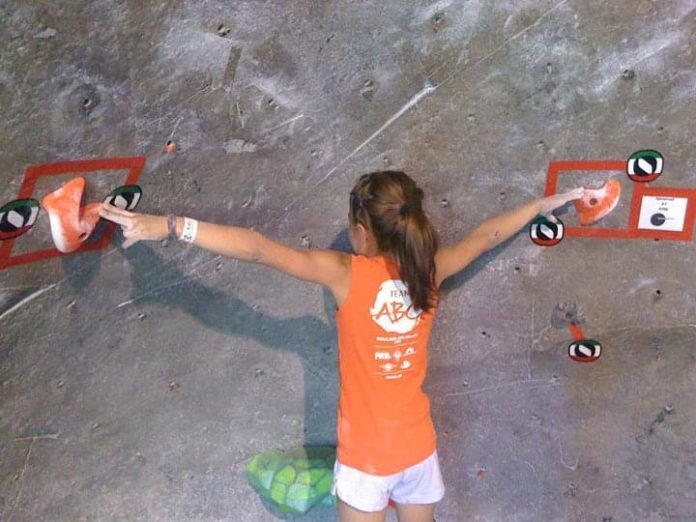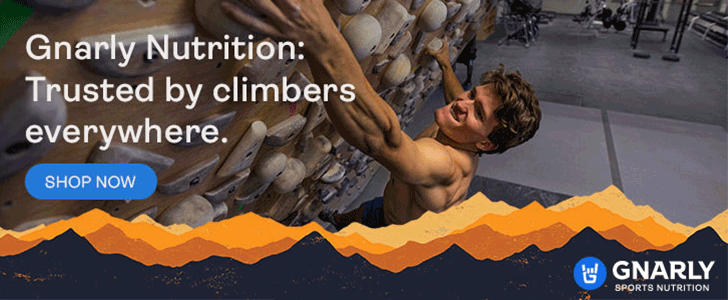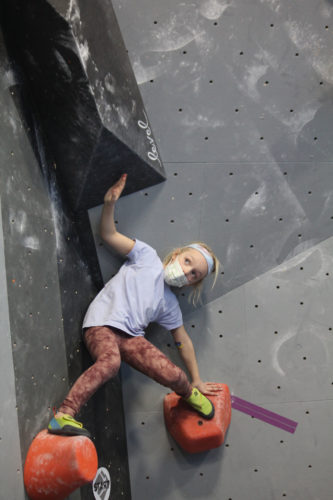
Setting high-quality routes for children is not easy. In theory, it might seem as simple as taking a typical adult-sized climb and moving the holds in closer. In reality, the nuances of doing this―and doing this well―are incredibly complex. But learning to do so is invaluable for every setter, as many of the same lessons can be applied to setting for different bodies in general.
One of the best places to learn the craft is the youth competition scene. To get insight into this realm of routesetting, I spoke with three highly experienced setters: Mike Bockino, a Level 5 USAC Chief Routesetter and the USAC Routesetting Program Manager; Molly Beard, a Level 5 USAC Chief who has been setting for children since 1995; and Jackie Hueftle, a USAC Level 4 Setter who has been setting since 1998, and is the co-owner and founder of Kilter Grips. Hueftle also has experience from the athlete side of the fence, having competed for the US World Team as a junior. Together, this trifecta dissects what goes into this complicated task, and shares how routesetters can think about and improve their youth-setting game.
It’s All About Sizing
Younger climbers are usually smaller, and good setting needs to address that. When the sizing is wrong, it can create an unfair advantage based on climbers’ body sizes, not their skillsets. “It is a bummer when you see someone who can reach through [a problem],” says Mike Bockino. “And then you see this amazingly talented climber who is really small have to do the more difficult move.”
To understand sizing, we need to start with definitions. An accessible problem is one that can be completed by climbers of all different sizes. A fair problem is not only accessible, but is the same level of difficulty for all sizes.
“Everything must be as fair as we can make it,” Bockino says. “The question is how much harder it is, rather than is it accessible. Once you have the realization that, oh, this is actually way harder if you’re small, then you have to figure out how to fix it.”
Dynos are a great example of the importance of sizing and fairness. When shorter youth have to jump further than taller youth, the difficulty of that move can ramp up quickly. “You start to compound the distance with other factors; they’re a little more stretched out, they don’t have as much bend in their leg, their foot has to leave the foothold a half second before the taller kid, they have to pull way harder, there’s way more swing, and they’re traveling further in comparison to their body size. By the end, you realize that this move is twice as hard if you’re four inches shorter.”
One limiting technique that Bockino sees setters use to adjust sizing is the ‘Elbow Rule.’ “It’s where people will stand on a foothold and say, ‘I can reach it with my elbow.’” Setters also use fingertips to elbow to measure hand-to-hand distance. “That only takes into account one factor—the overall body size. How high [a climber] can reach, straight up.”
So if the elbow rule is not enough, how can setters accurately measure for smaller climbers? Beard has a simple way of thinking about it. “It’s drive foot to target hand,” she says. “You need to figure out how they are moving in that box. Being able to then shorten up your geometry is key.”
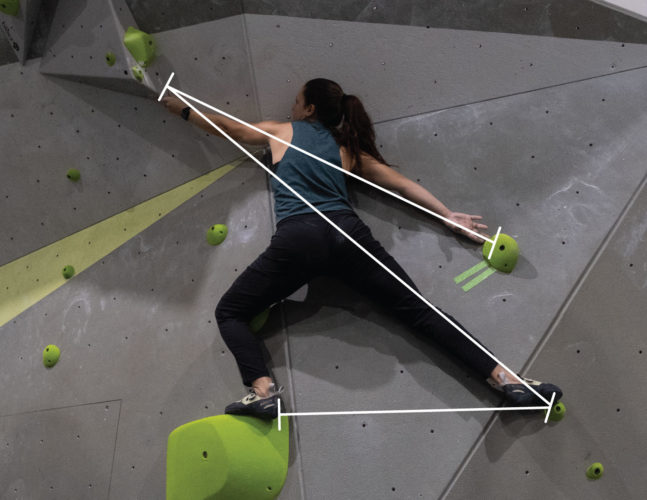
“There’s two main parts to this,” she adds. “First is the frame—shrinking the distance from foot holds to handholds, and handholds to handholds. Once you figure out the geometry that’s appropriate, then you have to develop the awareness of, ‘What is the average [ten-year-old] climber skillset?’ Which is different from an older youth athlete, or an adult.”
Hueftle references the importance of a commonly used setting philosophy: Sequences can be different, but the experience must be equal. With this approach, the movement or sequence might be different for different-sized climbers, but the difficulty is equal. One way she has used this idea in setting for children is by setting a problem within a problem. “We would set the main problem for the adults, and then we’d actually add another problem inside it for the kids.”
In this way, the same problems could be used for both adults and children in a competition, while providing clear insight into how different-sized bodies experienced the same climb. “Often, we would set intermediate moves in between the adult moves. You want to make both the hands and the feet not ruin the adult sequence. All things that will help the smaller climbers, but won’t necessarily help the adults. It might not be the same sequence, but the relative difficulty will be the same,” says Hueftle.
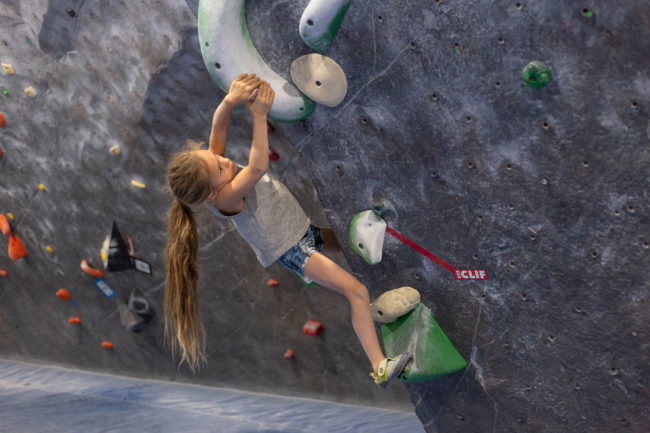
Children – as Capable as Adults
10 years ago, much of the competition scene was seeing who could pull the hardest on the smallest holds. Now, the trend is moving toward big, showy problems that feature dynamic, gymnastic and out-of-the-box movement, like triple paddle dynos, jump redirects and dynamic toe catches. Every season, routesetters and athletes are pushing the boundaries of what is possible in movement.
Children need to be a central part of this evolution. Simplifying movement, and purposefully leaving out some of the more advanced, competition-style moves, is only doing young competitors a disservice. But when these moves are introduced, it needs to be done with an understanding of how young climbers move.
Beard dissects the physiology of complex movement through the lens of childhood development. “As an adult, my brain is thinking: how hard am I holding the hold, how hard is my foot pushing, and how much tension am I generating in my core. For a child, those three things are not talking together. They just aren’t. That doesn’t happen intuitively until they turn 12.”
This doesn’t mean, however, that they are not capable of doing complex movement. Quite the opposite. It’s just a matter of training, coaching and exposure. “They can learn it,” Beard says. “They can train it. But intuitively, unless it’s taught, it’s not happening.”
These movements are taught through consistent exposure to well-set problems. “When you do [these moves] more,” says Bockino. “Even if it’s not the exact same move, it’s a variation of the same move over and over and over. It’s a practice thing, you have to practice these moves to get good at them. That’s why we see these younger kids at World Cups doing so well.”
“With setting for youth competitors,” Bockino adds, “I always remind routesetters that [the children] are still climbers. They can do everything that the bigger, stronger, older climbers can do, as long as it’s within their body size.”
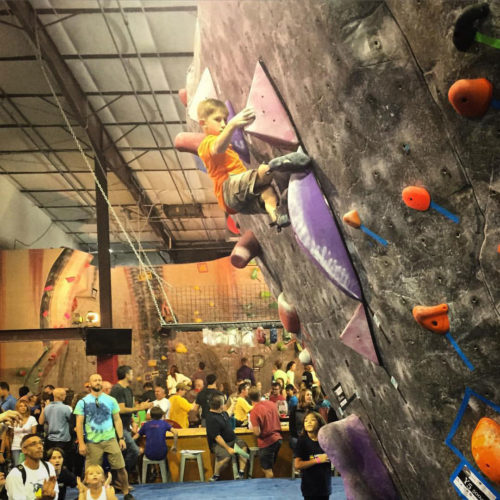
Hold Selection
Climbing holds are constantly evolving, and the holds setters currently have at their disposal are much different than they were even three years ago. The undercurrent behind current hold production is creating holds that are directional, meaning that the experience of the hold varies drastically depending on how it is angled on the wall.
“With more directional climbing holds, it falls on the setters to make specific, intended movement,” says Hueftle. “But that makes them responsible for thinking how someone who is only 4 feet tall will do the move. What solutions can [the smaller climbers] find? It definitely gives the setters more tools to be more specific, but it requires more from the setters too because there are fewer extra solutions that people can find.”
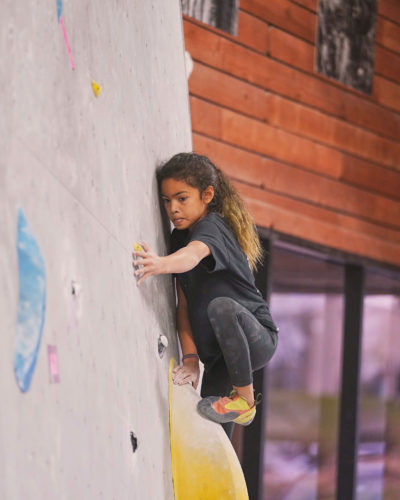
Understanding how holds will feel to smaller climbers is essential to setting fair problems. For example, for small children, a crimp can easily feel like a jug. “This is why everyone says, ‘Don’t put crimpers on the route,’” Beard says. “Their little digits get way behind those suckers, where ours won’t.” On the flip side, she notes that slopers and pinches can be much harder for smaller hands. “The general rule is if I’m using a wide sloping pinch, or a big open-hand sloper, I find a hold that I personally like. Then I’m going to find a hold that’s just a teeny bit better, because that is going to accommodate that hand sizing difference and comfort level.”
Hueftle elaborates further. “Fat lip jugs can feel not that positive for smaller hands. Crimps can be jugs, mini jugs can be really good jugs for the kids. The higher you get on a sloper, the harder it is to hold them. A smaller sloper that might not help an adult will feel better for a kid.”
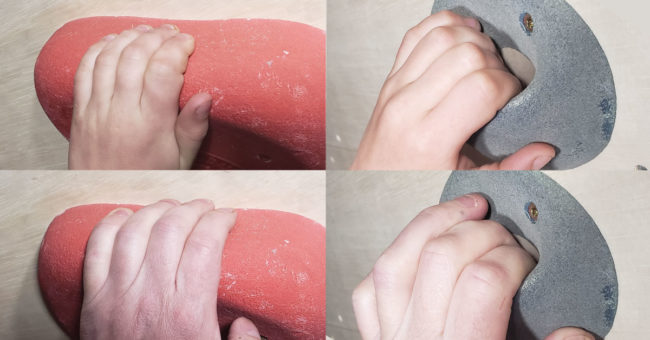
Larger holds, which are growing increasingly popular, can produce wide differences in experience. Hueftle gives an example of the impact of a large, high-profile sloper, where the most positive part is closest to the wall. “The kids are going to be wrapped a lot more because their arms are smaller because the hold’s way better all the way back. If you don’t consider that, you might make something that shuts everyone down. You have to consider the entire body position, including the hand, the wrist, the shoulder, how you’re holding the hold, where your body is.”
Another tool setters can use are blockers, to adjust the usable surface of any given hold. In this way, too, a competition problem can be adjusted for different competition categories by simply adding or removing a blocker. “You can set one base climb and then add blockers between rounds to change what the grip is for different categories,” says Hueftle. “It’s a really cool way to dial in the difficulty.”
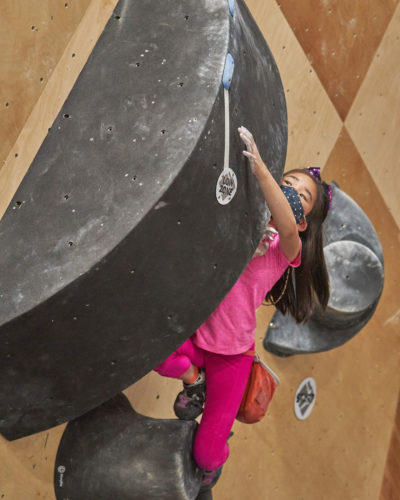
Forerunning for Different Sizes
Forerunning, the process where routesetters test and adjust the climbs they’ve put on the wall, can be an uncomfortable piece of the setting-for-children puzzle.
“It’s challenging to envision what the climber’s body is going to do when it moves through space,” Bockino says. However, he notes that while a setter cannot change their physical size, setters can still learn to ‘climb small,’ even if doing so can feel awkward and needs to be done carefully to avoid injury.
“When I’m teaching people how to forerun like a little kid,” Beard says, “I tell them, ‘Elbows to knees, and you need to sit in that box…’ I have the setter develop that [moment] of climbing small, and how that feels to them.” Bockino understands that challenge. “I think about my core being exhausted, and small amounts of elbow tendinitis.”
Beard breaks the forerunning process down into three parts. “Climbing it little. Climbing it as the setter wishes to climb it. And then observing the child climb it. And then you take those 3 pieces of information, and really developing a language of ‘what is that new movement.’” This is not a skill that comes overnight. “It’s a lot about practice,” she says. “And a lot about watching.”
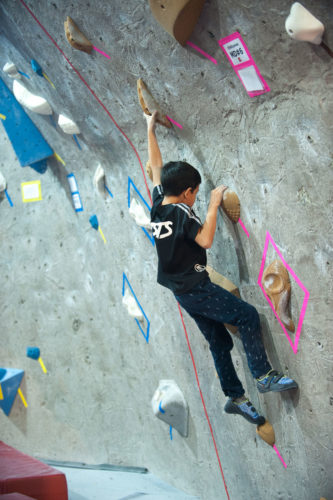
What to Not Forget
Bockino sees setters, including tenured ones, still make fundamental mistakes with sizing―for children and different-sized climbers in general―that can be avoided. One common mistake involves starting holds. “Still, after years and years, you’ll see routesetters place the starting hold where they, the setter, can pull into an undercling at a comfortable height. For the children, that hold is above their head!” Hueftle referenced the now-infamous photo of young Brooke Raboutou, unable to start a problem in a competition because she couldn’t reach the two starting holds. Remembering to climb small, including pulling onto the start holds, can help prevent unfair starts.
Another mistake is trying to fix a sizing issue by simply adding a higher foot. “This is a band-aid on a broken-leg mentality,” Bockino said, emphasizing again how everything must come back to fairness. “So often, the foot for the short climbers is a trash smear foot. [The setter] put this foot on for the shorties, where the tall people stand on the large handhold, and the short people have to stand on this garbage foot.” If setters are giving a separate option to different-sized climbers, the options need to be equally fair.
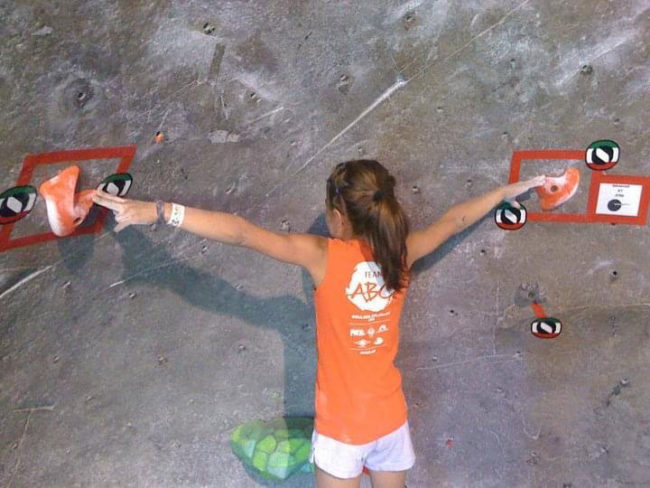
Even for setters with decades of high-level experience, creating fair problems for children and a variety of different body types is still a challenge. “At the end of the day,” Bockino says, “You do your best to make sure that the smallest kid can feasibly do all the moves if they are strong enough. And sometimes, yeah, you’ll watch the tallest kid keep a foot.”
“It’s a hard skillset to learn,” Beard echoes. “But I strongly encourage routesetters to learn, because it does make you a better setter all around. When you do it, when you give those kids a fair testing ground, it’s so worth it.”

Jonathan has been climbing for ten years and routesetting for half as long. He is a former magazine editor, and his writing spans from marketing content and journalism to speculative fiction. When he’s not writing or bolting plastic to plywood, he’s probably outside somewhere, hiking, climbing, or surfing poorly. He’s been known, on occasion, to drop everything and travel the world for months at a time.



